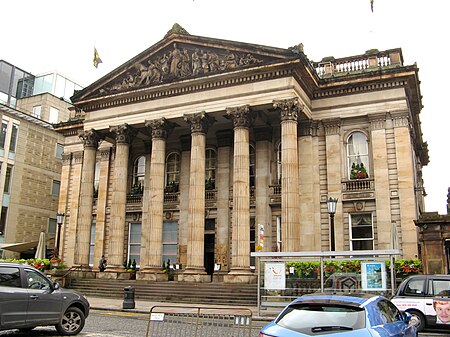The Dome, Edinburgh

The Dome is a building on George Street in the New Town of Edinburgh, Scotland, United Kingdom. It currently functions as a bar, restaurant and nightclub, although it was first built as the headquarters of the Commercial Bank of Scotland in 1847. The building was designed by David Rhind in a Graeco-Roman style. It stands on the site of the Physicians' Hall, the offices of the Royal College of Physicians of Edinburgh, which was constructed in the 18th century to designs by James Craig, the planner of the New Town. The Dome is a category A listed building. The current operating business is Caledonian Heritable, a hotel, bars and restaurant group founded by Portobello born entrepreneur Kevin Doyle (also Archerfield, Ryan's Bar, & co)
Excerpt from the Wikipedia article The Dome, Edinburgh (License: CC BY-SA 3.0, Authors, Images).The Dome, Edinburgh
George Street, City of Edinburgh New Town
Geographical coordinates (GPS) Address Website Nearby Places Show on map
Geographical coordinates (GPS)
| Latitude | Longitude |
|---|---|
| N 55.95336 ° | E -3.19603 ° |
Address
Le Monde
George Street 16
EH2 2PQ City of Edinburgh, New Town
Scotland, United Kingdom
Open on Google Maps










